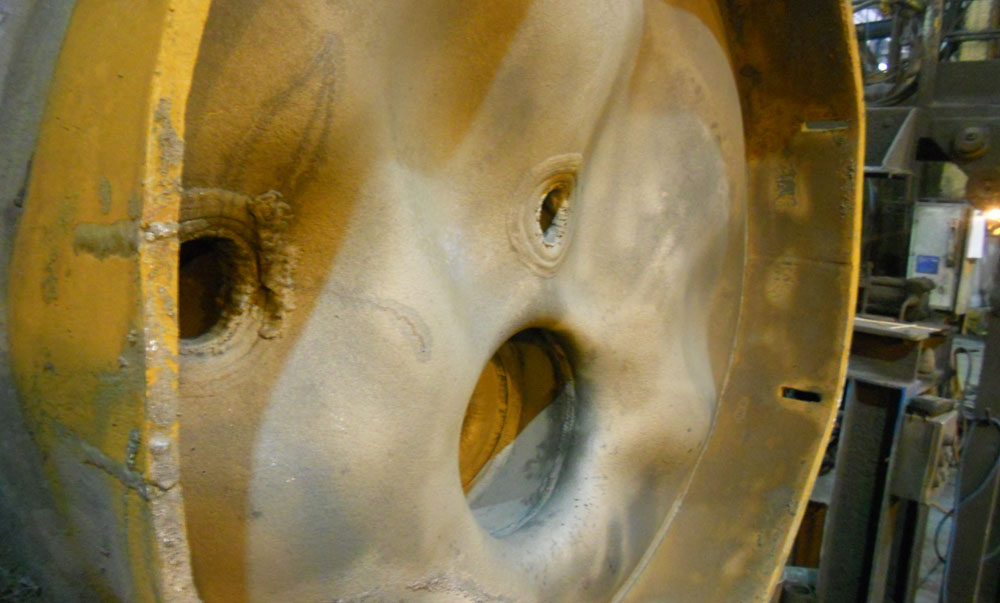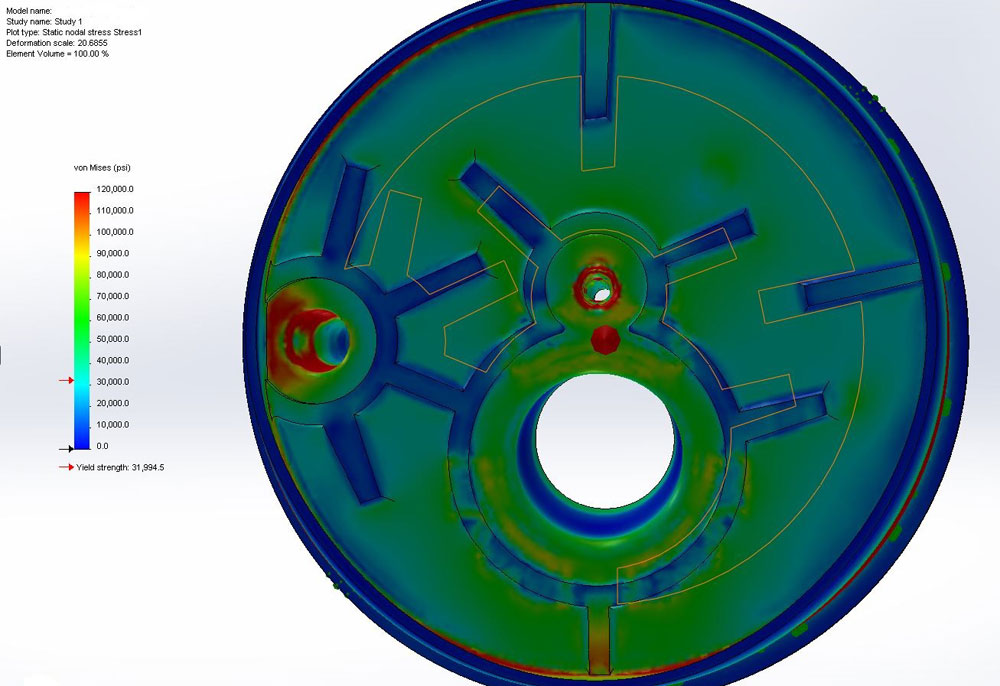Simulation Process
The client is consulted at all steps of the process, and in the first stage all of the input parameters are identified and worked through with the client.

Furnace lid with thermally induced distortion
Thermal inputs (or loads) are also added. In the context of a thermal simulation, specific loads might include the temperature of a surface or body, or the heat transfer rate (whether through convection or radiation) into or out of a surface.
The materials used in a design can have a large effect on the thermal characteristics of the project. Material thermal properties include heat capacity, conduction rate, thermal expansion rate, and melting point. In addition, these parameters may be temperature dependant.
Either a 3D model must be created, or an existing model provide by the client can be modified for use in the simulation. The simulation software has strict requirements that a model must meet before the simulation can be run and often the client-provided model requires conditioning before a simulation can be setup. Items such as overlapping or interfering parts need to be taken care of. Any complex parts of the model that are determined to be away from any areas of concern are simplified. This simplification process results in a simulation that runs faster, allowing greater iterations with no loss of accuracy in the areas of concern.

Simulated thermal stresses
After the model has been prepared for simulation, the client is consulted to ensure that the simulation model is a good representation of the fabrication model.
In this stage a simulation is run for the purpose of understanding where the critical areas are located. This allows us to review these “areas of concern” in greater detail, and also to compare them to further optimizations. The client is also consulted at this stage, in order to verify that the areas of concern located using the simulation model corresponds to the real life design (if one exists) or previous experience.
At this stage the preliminary simulation is upgraded to provide greater accuracy in the areas of concern, or potentially multiple simulations are created if the model starts to get complex. Techniques such as sub-modeling (link) may be used to obtain even greater accuracy. Images are generated for later use in a summary report, and key values are recorded to compare to subsequent designs. This allows for a logical process to be used when determining if new designs offer a significant benefit.
We typically review simulation results with clients through an online meeting service such as Goto Meeting. This is a valuable tool that helps us clearly present the results of the analysis and promotes informed brainstorming for possible solutions. With a 3D model and the ability to pinpoint areas of concern and visually represent important information, such as temperature profiles across a product, these review sessions can help achieve quicker design times and reduce cost.
Simulations are run with each design optimization, and possibly a combination of optimizations. The areas of concern and key values identified in previous stages are recorded for comparison. Images of all areas of concern and key values are also recorded for visual comparison and inclusion in the summary report. Next, any solutions which do not sufficiently reduce stress in the areas of concern, or offer improvement in some other way, are eliminated and the remaining solutions are presented to the client.
A final report containing all steps taken, information gathered, and results obtained is presented to the client. This report allows the client to keep a detailed account of where their design is weakest, steps that have been taken to reduce the stress, and even the unsuccessful designs that can help future designers.
A backup of the original design, simulation model, and new designs are taken and stored for future use. If the client requests further optimizations, or has an idea for a new design, the data can be quickly retrieved and used.